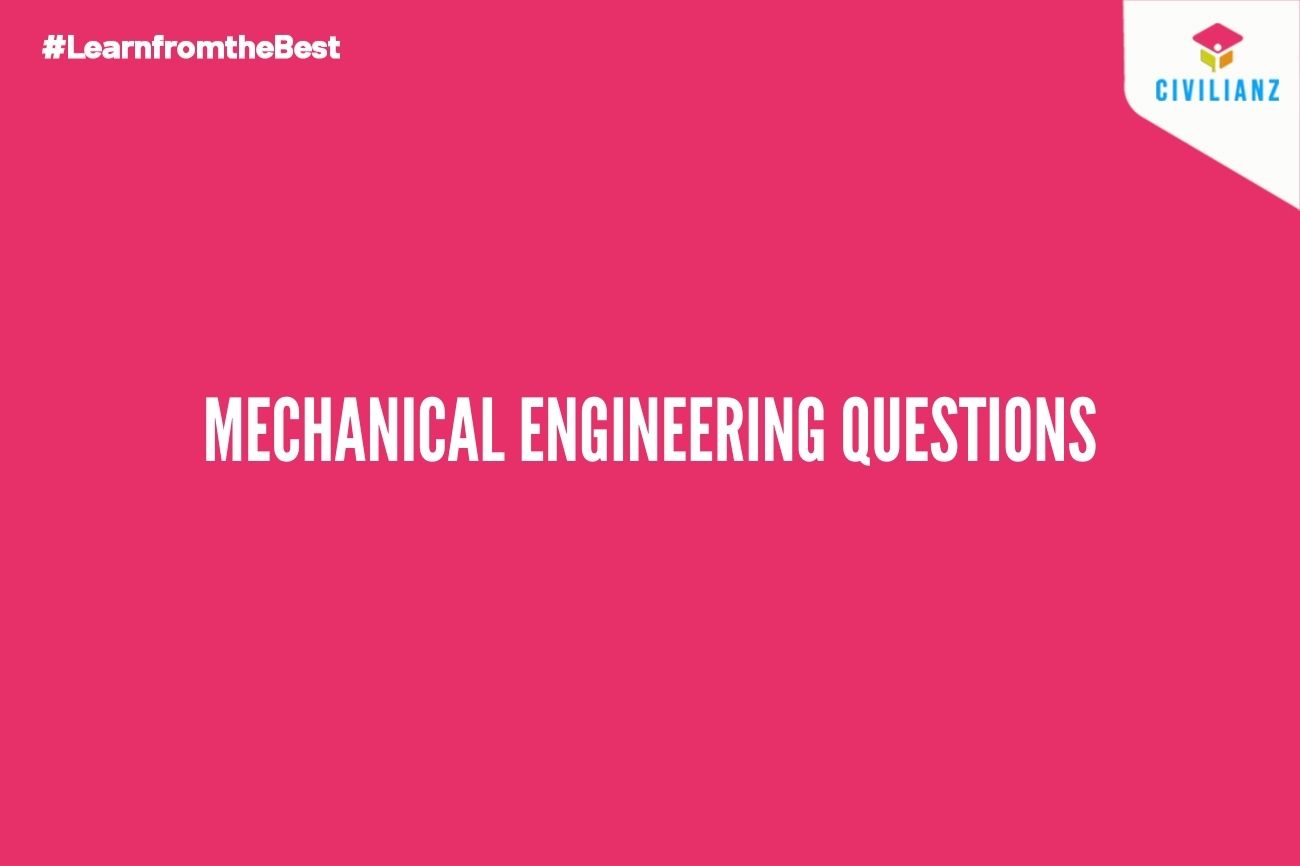
MECHANICAL ENGINEERING QUESTIONS – പ്രതീക്ഷിക്കാവുന്ന മെക്കാനിക്കല് ചോദ്യങ്ങള്!
ജൂലൈ 31 ന് നടക്കാനിരിക്കുന്ന ഓവര്സീയര് / ട്രേസര് – KWA Gr. III പരീക്ഷയുടെ മെക്കാനിക്കല് പോര്ഷനായി അവസാനവട്ട മുന്നൊരുക്കം!
The KWA 3rd GRADE OVERSEER Syllabus covers portions from Civil Engineering and Mechanical Engineering. As these Technical exams are equally meant for Mechanical and Civil Engineering candidates, which hold equal weightage for both subjects. KWA OVERSEER GRADE 2 syllabus is almost same as that of kwa overseer grade 3 syllabus
Normally a 50-50 weightage is expected, but it may vary slightly. However, those candidates who score maximum mark from their own stream and manage to score the crucial marks from other stream will be the winner in KWA exams.
Scoring from the basics will do the job for tracer exams. Anway, happy learning and all the best wishes from Team Civilianz for your exam preparations!
For Mechanical questions pdf
DOWNLOAD
KWA Mechanical | PYQ Discussion
Old Syllabus of KWA Overseer exam
W/S Calculation and Science (Mechanical)- Units – British, MKS, SI Units – and their
conversions – Length, Area, Volume, Mass and Time – Definition of Mass, Weight, Density,
Specific Gravity – Determination of Sides and area of triangles, polygons, Circles, segment
and sections – surface area and volume of cubes, cylinder, prism, pyramid, cone, sphere –
Sympson’s Rule – Application – Area of the ellipse – Simple Problems.
Machine Tools – Safety precautions – the study of parts, working, different operation, and
of lathes – milling machine – shaping machine – slotting machine – planning machine –
various attachments – quick return mechanisms
Internal Combustion Engines – Engine Parts – two-stroke and four-stroke engines – petrol
and diesel engines – components like the carburetor, fuel injector, fuel pump, etc. Bearing
materials – bearing classifications – frictional and anti frictional bearings – advantages and
applications
Belt, Gear, and Chain Drives – belt materials – types of material – specifications and
number coding belt power – belt speed – slip and creep – velocity ratio – pulley ratio – V
belt – number of belts for power transmission – gear materials – types of gear drives –
velocity ratio – nomenclature of gears –types of gears and application – classification of
chain drive – power transmission – positive drive. Cams – types of cams – the function
of cams – industrial application – types of followers – kinds of motion – displacement
diagrams – terms used
Machine Drawing -Screw threads – nomenclature of screw threads – nuts, bolts, and
washers – BIS conventions – cotter and pin joints – riveted joints – welded joints, pulleys,
bearings, machine parts, engine parts, valves cam and followers, jig and fixtures. Couplings,
pipe joints, and pipe layouts, Surface Texture – Limits, fits, and tolerances
Geometrical Drawing and Engineering Graphics: Graphic Language – drawing instruments
– types of lines –method of lettering – Dimensioning – principles of representation and
construction of different types of scales – Recommended scales for drawing with reference
to BIS Codes – Construction of Plain Geometrical figures – Construction of conic sections
– ellipse, parabola, and hyperbola – Miscellaneous curves – involute, cycloid, helix and
spiral – theory of projections – types of projections – classification of planes – first angle
& third angle projections – the projection of points – Lines and Planes – the projection of
Lamina, Solids – True shapes – section of solids – Intersection of surfaces – developments
of surfaces – orthographic projection – Oblique projection – Isometric projection –
perspective projection
Practice on Computer and Computer Application:- General terms used in Computer,
Elementary DOS Commands, Windows commands and their uses, MS Word and MS
Office, AutoCAD Introduction, Various AutoCAD commands, use of different terms of
AutoCAD, function keys and shortcut keys, knowledge about 2Dand 3D modeling, solid
primitives, viewpoint, extrude and subtract command, union, Drawing with layers and
blocks. Knowledge of layout and printing drawing.
Building Construction – Glossary of terms of building construction and building materials.
Names of different parts of the building. Bricks masonry – principles of construction of
bonds – English Bond, Flemish Bond, T Joints, Wall Junctions. R.C.C. – Introduction, uses,
materials, proportions, and formwork including bending of bars and construction reference
of BIS Code. Reinforced brickwork. Materials used for RCC, selection of materials, coarse
aggregate, fine aggregate, cement- water, reinforcement, characteristics. Method of mixing
concrete-hand mixing and machine mixing, Slump test
Arches: technical terms, forms-bricks, and stone, lintel. Bracket, centering, forms, and
sizes.
Door: Parts of the door, Location, sizes, and types of Windows and Ventilators – including
steel window & ventilators – fixtures and fastenings used indoors, windows, and ventilators
Roof: Pitched roof types, roof covering, component parts of the roof. Theory of trussing,
king, and queen post trusses
Estimating and Costing – for simple building, the specification for different works
Road, Irrigation – Introduction to roads, general principles of alignment. Classification
and construction of different types of roads. Glossary terms of roads, culvert, irrigation
W/S Calculation and Science (Civil) – Centre of Gravity, Hooks Law, Ultimate stress and
Breaking stress, Moment and Moment of Inertia for different sections, Various types of load
and supports, Bending moment, shearing force, Cantilever & Simply supported beams.
Bending stress.
Surveying Chain Surveying – Principles – instruments employed, used, case & maintenance. Field Problems. Field book plotting. Plane table survey – Instruments employed, use, care &
maintenance. Prismatic Compass. Planimeter and Pentagraph. Leveling – Instruments and
accessories – their uses and description – level book. Differential leveling. Application of
chain and leveling to construction. Plotting, preparation of contour, computing earthwork
by spot level, and contours. Setting out work.
Planimeter –enlarging and reducing of plans, use of proportions, compass and pantographs
and their parts
Curves – Simple curves, Compound curves, transition curves, vertical curves












Leave a comment